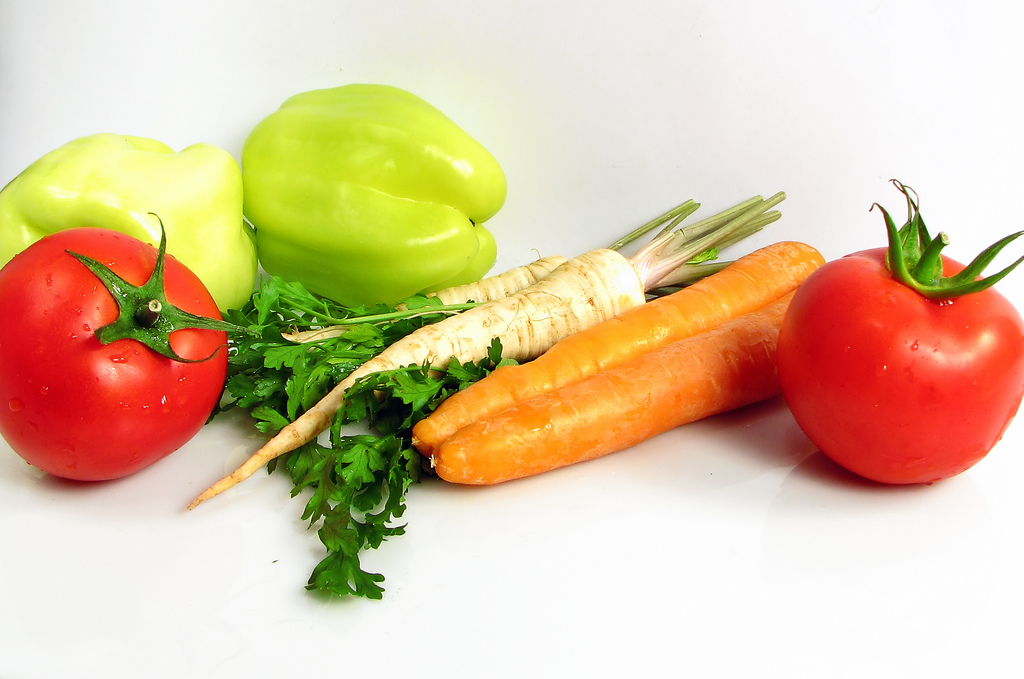
You know to reach for spinach over sugar, but did you know the way you cook that spinach affects how many nutrients your body absorbs? Welcome to the very complicated world of bioavailability, which is really just a fancy way to talk about the amount of nutrients the body takes in when you prepare and eat a certain food, says Tracy Lesht, R.D. Here’s what you need to do to make sure you’re getting the maximum amount of health-boosting benefits from every single bite.
Take In Fat with Fat-Soluble Vitamins
Fat-soluble vitamins, such as vitamins A, D, E, and K, do exactly what they sound like: They dissolve in fat. So eating them with a naturally fatty ingredient can help the body absorb the vitamins more easily, says Adrienne Youdim, M.D., a physician nutrition specialist based in California. If you top your spinach salad with olive oil, or add a few slices of avocado to your omelet, bonus points for you: You’re already nailing it.
That said, you do need to watch how much of these vitamins you take in. Unlike water-soluble vitamins (B12, C, biotin, and folic acid, for example) that get flushed out through urine whenever there’s too much of it in your system, if you ingest too much of a fat-soluble vitamin then your body will store that extra amount as fat in your liver tissue. If that happens too often, it can lead to a chronic, toxic, and potentially life-threatening condition known as hypervitaminosis. It’s pretty rare for that to actually happen, and when it does it’s usually from taking too much of a vitamin dietary supplement (rather than ingesting vitamins through food), but it can happen.
To figure out that sweet spot between enough but not too much, Lesht says its best to aim for the recommended daily allowance (RDA)–it’s set at that level so your body reaps the maximum amount of benefits–without exceeding the upper intake level (UL). And whatever you do, don’t skip the fat-soluble vitamins in favor of water-soluble ones only. Every vitamin plays an important role in keeping up your overall health, says Youdim, so you can’t really swap one for the other.
Pair Foods That Become Better Together
It’s true: Some food pairings are better than others (uh, hello, PB&J), and that rings true when it comes to the amount of nutrients that the body absorbs. Take vegetables and fat, for instance. A study published in The American Journal of Clinical Nutrition found that people absorbed more carotenoids found in a salad filled with spinach, lettuce, tomatoes, and carrots when it was topped with a full-fat dressing rather than a low- or non-fat one. You want your body to stock up on carotenoids like beta-carotene, lycopene, lutein, and zeaxanthin because they help protect the body against disease. Plus, some carotenoids–like lycopene–get a double benefit from being paired with fat because they’re fat-soluble. Proof: A study from Ohio State University found people absorbed 4.4 times more lycopene when a tomato-based salsa also included avocados.
Another all-star combo, especially if you’re a vegetarian: Pairing non-animal sources of iron, such as tofu, with vitamin C. Iron from animals is known as heme iron, and it’s more readily available for your body to absorb than non-heme iron. But vitamin C can increase the absorption of non-heme iron, says Lesht. So try a tofu-topped spinach salad with broccoli, red pepper, orange slices, or strawberries, she suggests.
Think Through Your Cooking Method
Cooking can also affect the amount of nutrients your body absorbs. In general, cooking enhances the bioavailability of food, says Youdim, but that’s not a hard-and-fast rule. Water-soluble vitamins, for example, are especially susceptible to heat and water, according to a study published in the European Journal of Clinical Nutrition. “They lose more nutrients during cooking processes such as boiling because nutrients leak out into the water,” says Lesht.
Rather than pouring that water down the sink, try to reuse it in soups, stews, or sauces, she suggests. Or steam your veggies instead of boiling them. If you have to use heat and water, Lesht says it’s best to “aim to minimize the cooking time and use small amounts of water with low heat to absorb the maximum amount of nutrients.” And for vegetables that tend to require a longer cook time, there’s a quick hack: Cut ’em into smaller pieces before tossing in the water. Smaller pieces = faster cook.
Oh, and don’t be afraid to use that microwave–it doesn’t zap away a food’s nutrients. In fact, a study published in the Journal of Food Science found boiling and steaming broccoli cut its vitamin C levels by 34 and 22 percent respectively, while microwaved broccoli hung onto 90 percent of the original amount.
On the other hand, some foods benefit from a little heat because it can help break down cell walls, making it easier for the body to absorb the nutrients. Sure, lycopene-rich tomatoes are beneficial in an avocado salsa, but they’re even more nutritious when cooked: A study published in the British Journal of Nutrition found that study participants absorbed more than 55 percent more lycopene when tomato sauce cooked for an extra 40 minutes.
Keep It Simple
If you feel overwhelmed by the ins and outs of bioavailability, Lesht says it’s best to simply focus on eating a well-balanced diet that incorporates all the colors of the rainbow. “You shouldn’t get too hung up on the bioavailability and cooking of foods because, at the end of the day, your food needs to be palatable to you,” she says. “It’s more important to consume fruits and vegetables cooked and prepared the way you enjoy them than it is to be overly concerned with their bioavailability and nutrient loss due to cooking. In the grand scheme of things, eating a vegetable and only absorbing 50 percent of its nutrients is still better than not eating the vegetable at all.”
